writerdyke
247 posts
writing blog / resources, prompts, inspiration, etc / main is @mirrens
Don't wanna be here? Send us removal request.
Text
things I do to unstick my book
(I’m a pantser!)
Ask if this scene really needs to be a scene or if I can just summarize it
Ask if this summary really needs to be summary or if I need more scene
Write a very focused, very pretty sentence
Circle back a couple scenes & ask if one of them is causing “symptoms” later in the book
Get in and get out (push through a tough scene as fast as possible & then run forward and fast like wind to the next bit)
Add an exciting element (a new character, a change of location, other… things ;))
Pause and revise if I’m feeling destabilized
Be specific about what I DON’T like (example: I can’t get past this scene because the dialogue is so mechanical instead of “ahhh I hate it all”)
Read what I last wrote aloud (to hopefully sink into some momentum) OR get a robot to read it to me
Try a teeny tiny writing sprint (1-5 minutes of nonstop writing)
Write a flashback (bonus points if it’s connected emotionally or plot-wise to the fictive present)
Read from a literary godparent (this is when you pull out the books/stories/poems etc that make you excited about writing!)
Write or brainstorm every possible direction of a scene (sometimes grueling, sometimes worth it)
Sit and think (in a bathtub, on a walk—try to immerse yourself in your story like you’re a random character who got plopped in there; what do you see?)
Method write
Find a word that excites you and use that in your next scene
Double check if you’re hitting the right story beats (or if you skipped one, spent too long on one, spent too little on one, etc)
Write “bare bones” and come back to fine tune it later (similar to get in and get out)
Write with your eyes closed (be warned of incomprehensible text if you can’t type with closed eyes)
Break down your causal chain bit by bit (even the boring parts) and see if there’s a broken link. Then delete the boring parts (sometimes we just need to see how EXACTLY we got to a place and how EXACTLY that leads us to the important bit–I find I missed something critical when I do this).
Rely on crutch words, boring details & trust you can edit it later (sometimes the idea of perfection in draft 1 can be unproductive)
Ask a friend to read the work & tell you what they think (sometimes we need help; writing is hard)
Ask a friend for a compliment read (sometimes we just need to be hyped up)
Change the tense (temporarily & be warned that different tenses may require different approaches when drafting, I only do this when I’m not sure what else to try)
Talk myself through the problem as if I’m talking to a friend (I pull up my notes and literally start typing: “so I’m struggling with XYZ scene right now for XYZ reason and I don’t know what to do. What if XYZ happened, or what if I changed XYZ?”)
Take a break—sometimes I’m just tired/burnt out/not in the mood to write (that’s okay!)
I post more tips I’ve picked up along the way on youtube!
1K notes
·
View notes
Text
Hot take: Actual literary analysis requires at least as much skill as writing itself, with less obvious measures of whether or not you’re shit at it, and nobody is allowed to do any more god damn litcrit until they learn what the terms “show, don’t tell” and “pacing” mean.
62K notes
·
View notes
Photo

Venetta Octavia, from “I Set It in Stone”
10K notes
·
View notes
Text
sapphic//songs about __
Girls with a boyfriends
your boyfriend by bloxx
boyfriend by marika hackman
girlfriend by kitty
boyfriend by tegan and sara
girlfriend by ria mae
taking off all my clothes by heidi
Breakups
talia by king princess
0108 by nakala
strangers by halsey
me & her by heavens to betsy
curious by hayley kiyoko
sheet stains by lauren ruth ward
always this way by laura marling
heartbroken forever by tender forever
now im all messed up by tegan and sara
Bad Girls
goth girls are easy by lesbian bed death
dressed in black by gossip
lesbian vampyres from outer space
she’s a gun by the greeting committee
woman dangerous by doria roberts
rebel girl by bikini kill
P.U.N.K girl by heavenly
strong woman by jen cloher
Sex
sweet girl by nicole dollanganger
bitches by tove lo
bang me box by miley cyrus
box by siya
holy by king princess
i didn’t just kiss her by jen foster
Young love
be my leia by the dollyrots
red by miki ratsula
sappho by frankie cosmos
hold your hand by nicolette forte
no kings by the total bettys
say anything by girl in red
hot like the room by my body
gossip girl by grace vanderwaal
sweet girl by nicole dollanganger
Old Love
marry me by tender forever
with a girl like you by thao
eden with my eve by jen cloher
Bisexuality
boys by maris
carmen by lana del rey
bad at love by halsey
in or out by ani difranco
think about girls sometimes by amber
i wanna boyfriend with a car by kate nash
Lesbians
I’ll never want a BF by bec sandridge
i don’t do boys by elektra
dyke march 2001 by le tigre
dyke bars never last by sapphic lasers\
blue collar sex kitten by lauren ruth ward
the only dyke at the open mic by kate reid
Pining
sleepover by hayley kiyoko
jessie’s girl by mary lambert
bestie by sizzy rocket
daisy by zedd
like me by chely wright
veronica by daddy issues
i want her by blind fury
jenny by studio killers
i wanna be your girlfriend by girl in red
Confidence
B.I.G by caitlyn scarlett
shade by iamddb
ICY GRL by saweetie ft. kehlani
boinked the bride by ember swift
checking out your babe by tribe 8
Q.U.E.E.N by janelle monae
Real People/Characters/Media
edie windsor by zoë lewis
the ellen page by partner
marceline by willow
carol by jen cloher
fingersmith by jen cloher
Coming out/Homophobia
homo song by mara levi
room by palehound
LGBT by lowell
love is love by naz & ella
love is love by starley
married in london by janis ian
pride by grace petrie
this is me by jen foster
gay sex by be steadwell
not worth hiding by alex the astronaut
Butch/Femme
drag king bar by bitch and animal
femme bitch top by tribe 8
only straight girls wear dresses by cwa
dyke bars never last by sapphic lasers
butch in the streets by tribe 8
closet femme by kate reid
Running away
greatness by jen foster
chelsea lets go join the circus by agent R
feminist housewives by bitch and animal
41K notes
·
View notes
Note
Do you have any tips on how to create a villain?
Hi :)
How to create a villain
A good villain is ultimately what makes a hero heroic and is therefore a very important part of your story.
Why do we need a villain?
opposite of the story’s hero
their goals and motivations oppose those of the hero
the hero is reacting to the actions of the villain
showcases the hero’s weaknesses
the character of the villain should be one of your priorities while planning the story
Types of villains
human villains
fantasy villains (with magical abilities, superpowers, etc.)
animal villains (e.g., Jungle Book)
abstract villains (an idea, a society, a corporation, etc.)
if you make your villain more abstract, it can have advantages, but it also makes it harder for your readers to relate to them and understand them
if you have an abstract villain, think about using human representations of that villain for your readers to project their feelings and thoughts onto
more specific types of villains:
likeable villain
unsympathetic villain
unpredictable villain
Characteristics of a villain
There are many different types of villains, but they also share a few similar characteristics:
own beliefs and morals – What do they believe in? What is morally correct for them? Do they see themself as bad/evil? How far will they go? Do they make exceptions for some people or do they not care at all? Maybe they want to do the right thing, but they go about it the wrong way.
goals and motivation – goals are things they wan to have or want to accomplish, but motivation is even more important, it explains why they want or need their goal to be fulfilled, you need to invest time into giving your villain a (at least for them) plausible reason for what they are doing
connection to the hero – the hero reacts to the villain’s actions, maybe their fates are intertwined, maybe the hero’s actions in the past led to them becoming the villain, the villain is interrupting and then furthering the hero’s character development the same way the hero is doing to the villain’s development
worthy opponent – being especially powerful, clever, a specialist in something the hero is not, seemingly unbeatable until the end
compelling backstory – people are usually not born bad, it’s something they’ve become over time, it explains the motivation, probably not just one defining moment, if you want one event that changed them, then also think about the reactions from others to that event or what happened afterwards that made them turn evil
similar characteristic to the hero – think about where it went wrong, where did they turn to the dark side? Like I said before, a tragic event does not automatically lead someone to become a villain. Losing their parents young for example can turn them either into the villain or the hero, decide why they turned in that direction that they did
More tips:
Make your villain interesting
your reader should love to hate, but also hate to love them in a way
give them their own character arc and show development
make them special the same way your hero is special
give them a magnetic personality
don’t make them too predictable or the readers will lose their fear of them
Humanise your villains
not born evil, maybe they were corrupted
nothing more frightening than seeing yourself in a villain
give them positive qualities
make the readers sometimes sympathise with them
give them moments of relatability
your readers should be interested in the villain, but not necessarily root for them (only if that’s your true intention), because it could undermine your hero’s actions and motivation
Make them lose
If your story doesn’t end with evil ruling over the world, you need to know how to make the villains lose:
give them weaknesses
let them be a slave to their own moral code
let them have fatal character flaws that in the end the basically defeat themself
give them a worthy ending, something appropriate for a great opponent
Good luck creating believable villains!
- Jana
6K notes
·
View notes
Text
Y'know, I’m really loving the return to a “tropes are good” mindset. Embrace the cliché. Use the overused. If it makes you feel good to read and write, don’t stress if it’s not completely original. It’s so much more fun to not agonize over having to make every aspect of a piece revolutionary
36K notes
·
View notes
Text
How to Write a (Healthy) Relationship: An Illustrated Guide.
@trappedinfairytales asked:
Hi! Let me start by saying this blog is a god send for more than just writing skills, I even turned on your notifications 😂 Anyway, I apologize if you’ve already done a post like this, but I was wondering if you could do a post with different kinds of healthy relationships? I feel like it would help, because even though I am a bi girl, I’ve never been in a relationship so sometimes I don’t know where to start 🙈
@magnificentcollectiverebel asked:
Bro bro I’m trying to write a cute lil romance do you have any tips please I didn’t realize writing needs so much planning also thank you for all the tips on characters both of my love interests are girls the tips help
Excellent questions! Healthy relationships, particularly ones involving queer people, are something I’m pretty sure we all could use.
Now, there has been a request for me to make a post about LGBTQ characters, so I will talk more exclusively about queer relationships then; sufficed to say this post applies to all types of healthy relationships. Though most of the examples I use are admittedly queer – you could say I’m BI-ased on the matter. (I’ll see myself out.)
In the meantime, here are my personal rules of thumb for writing a ship-worthy romance.
1. Allow opposites to attract (but do it right!)
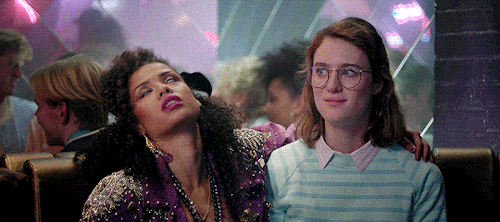
No, I’m not talking about two characters who have no common ground or core values; I’m talking about two characters whose traits compliment one another.
Maybe one’s analytical and the other’s impulse driven. Maybe one’s a happy ray of sunshine and the other’s a grump. Maybe one’s an idealist and the other’s a realist.
Do you see pattern here? Not only do these proposed pairings balance each other out, but their mutually beneficial to each other: an impulse-driven character will add spontaneity to the life of their analytical partner, while the analytical character will keep the impulsive one from leaping off cliffs; the happy ray of sunshine will brighten up the life of the grump, while the grump will keep the ray of sunshine aware of life’s problems; the realist will keep the idealist weighted in reality while the idealist will help them to get off the ground.
Moreover, as each of them has something the other lacks and needs, it creates a natural magnetism between them.
Just think of it like the old Greek myth, in which mankind was split in two by Zeus and each of them are searching for their other half to become their best selves.
In terms of writing romance, pretend your two characters are two halves of a greater whole, and allow them to complete each other.
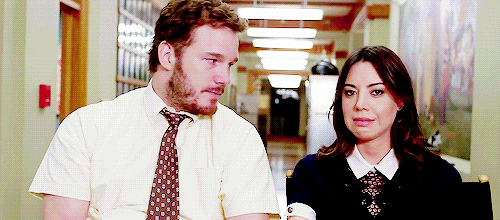
2. Create chemistry and attraction (but remember that it does not immediately equal love.)

If I had to pinpoint the source of my frustration with the depictions of attraction in literature, particularly YA romantic novels, I would say it roughly narrows down to the fact that the attraction, as it’s depicted, is largely extremely vapid and hollow.
Two characters that hate each other are not going to have true chemistry or be compatible for a long-term relationship, even if one of them is equipped with excessive depictions of eye-color and can smirk like a champ.
To create true chemistry, the readers have to crave the characters’ interactions; they have to root for them to get together, not role their eyes when they finally do.
So how do you do this? Well, first and foremost, there are different and better ways to convey attraction than the tried and true “cerulean orbs” and obnoxious smirks and whatnot.
First and foremost, save strong, sensual language, like “she leaned in close, and I tasted her breath on mine,” “My heart thudded painfully in my chest as I felt her body press against mine,” et cetera for when your characters are actually about to do the deed. That way, your audience isn’t desensitized to it and are more likely to root for your characters when they finally shack up.
When your characters first meet, keep the language light and playful. Unless you’re doing a modern, queer reenactment of Romeo and Juliet (which sounds pretty awesome, honestly – so long as the ending is happier) most people aren’t righting sonnets about people they first meet.
Let your POV character check out her prospective partner if you so desire, but press hold on the purple prose.
For instance, instead of something like this:
“Long lashes fluttered like the wings of the butterfly over peridot orbs, a faint gold dusting over the graceful slope of her nose. Red lips as ripe as strawberries glistened in the sun, and a waterfall of gilded hair fell over her slender shoulders.”
Try something more along the lines of this:
“She had striking green eyes framed with long lashes, a smattering of freckles over the bridge of her nose. Her hair was a thick mane of unkempt gold, and when she saw me, she smiled. Her lips were plump and strawberry pink.”
If you’ll notice, both passages convey basically the same thing (i.e. that this narrator finds her prospective gal-pal attractive): one is just significantly less pretentious than the other, and in my opinion, a lot more readable.
As the story continues, you’ll likely want to build up the tension as the character’s attraction to one another grows. Maybe your character starts to get butterflies in their stomach whenever their love interest is around, or there’s a tension-filled moment where their skin brushes together. Maybe they’ve found themselves constantly looking at one another’s lips and mouths.
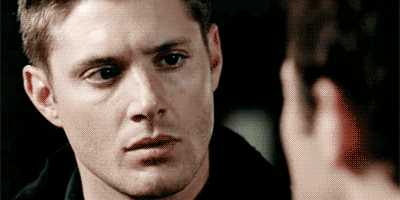
(I talk some more about building sexual tension in this post here.)
Keep in mind while developing your characters’ chemistry into something greater that contrary to what most YA novels will teach you, attraction isn’t love. Finding one another’s meatsuits aesthetically pleasing isn’t reasonable merit for a long-term commitment. Love, generally speaking, is often just that: it’s a commitment. It takes time to cultivate, and it isn’t fun 100% of the time. But people stick with it anyway, because ideally, the payoff is worth it.
And that’s a good thing. As an author, you get to build up on your character’s relationship, challenge it, make it stronger. And that’s a lot of fucking fun. Plus, you get to write all the cute romantic shit in the times in between.
If you are implying love at first sight (which, sappy bitch I am, I’m a bit of a sucker for) feel free to imply as such, but I’m still inclined to think short, sweet descriptions work best: “Their eyes met, and for a moment, Ishmael could have sworn the earth had come to a stop while the world kept moving.” Or perhaps, “Luna looked at Misery for the first time, and knew right away this was the woman she was going to marry.”
Now keep moving. Too strong language too fast weighs your story down, keeps the reader from relating to it, and detracts from the satisfaction of when your characters finally end up together.
3. Let your characters’ relationship be built on friendship.
The other day, I got lunch with my best friend and her new girlfriend. A year or so ago, she’d gotten out of a really toxic relationship that she’d been in since I’d first known her.
I’d thought she was happy (because at the time, I didn’t have anything else to compare it to) but seeing her with her new girl was like seeing the proverbial sunrise for the first time. (Pardon the floral language. Even I’m not totally exempt from purple prose.)
We laughed, we made jokes, we all checked out the hot waitress together. Overall, it was just like spending time with two close friends – just, y’know. They happened to be in a romantic relationship with each other. And that, let me tell you, makes all the difference in the world.
I’ve said this before, and I’ll say it again: all the sexual attraction in the world will not make up for the lack of a strong basis of mutual respect, affection, and camaraderie.
Sorry to burst your bubble, heterosexual authors of the mainstream publishing world: even if they kiss in the rain till the cows come home, even if the music swells every time they make contact, even if it’s a love story for the ages, that means your characters actually have to be friends.
Queer authors, I find, tend to be a little more attune to this concept than their straight counterparts (perhaps because it’s in our nature to question preconceptions of what constitutes a healthy relationship) but it’s still good to keep this in mind when you’re writing your characters’ relationship.
So ask yourself these questions:
Do your characters have any shared interests or hobbies?
Do they actively take interest in their partners’ hobbies?
Do they crack each other up, tell each other jokes? Exchange playful jibes that aren’t pointed or hurtful?
Do they do the above more than they fight and bicker?
Would both your characters feel comfortable with their partner seeing them at their most comfortable (e.g. stuffing their faces with Nutella and watching bad reality shows)?
If so, would they join in?
If one partner feels hurt, neglected, or insecure, will the other partner take notice and attempt to comfort and reassure them?
Can they confide in each other?
Do they share the same goals, desires, and core values?
If you answered ‘yes’ to most of these questions, congratulations: your characters’ romance is more akin to Gomez and Morticia than most YA pairings today. And believe me, that’s a good thing.
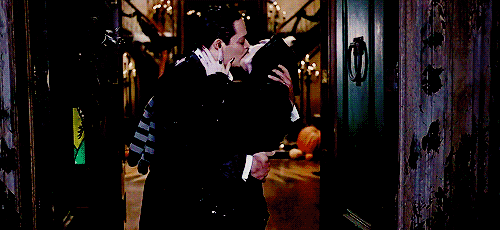
4. Make sure your characters are more or less equals.
She’s a ridiculously hot, intelligent, accomplished twenty-something. He’s a an out-of-shape manchild in his thirties who makes lots of fart jokes and probably has a neck-beard.
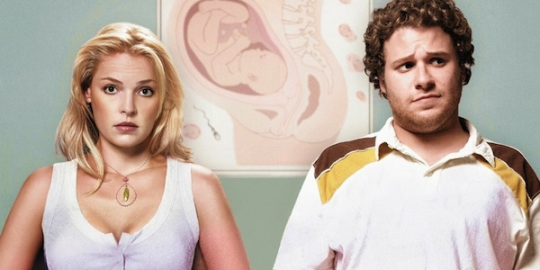
This pairing probably would raise quite a few eyebrows in real life, but it happens so much in movies and TV (particularly comedies) that no one even questions it. Do I really need to remind you that the entertainment industry is largely male dominated?
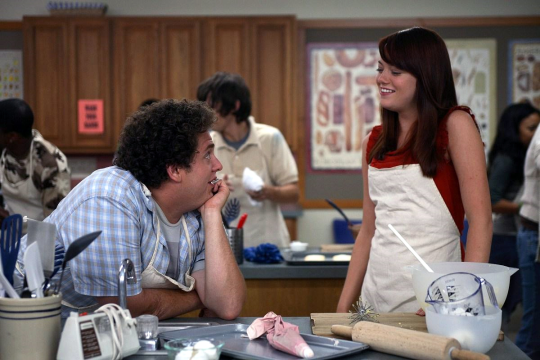
Granted, I’m pretty sure you folks are both queer gals (like yours truly), so such a blaring example of male wish fulfillment is unlikely. But it’s still good to remember that, one way or another, a ship-worthy pairing is probably going to be comprised of equals.
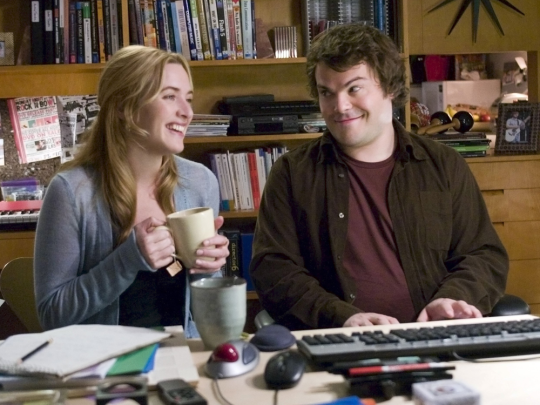
Okay, you get the picture. It happens a lot.
This doesn’t always equate to characters being equal in conventional attractiveness: movies such as Legally Blond and Hairspray, for example, both have adorable pairings featuring lovely plus-sized/chubby women and thinner, more conventionally attractive men. Moreover, they don’t leave anything resembling the bad taste in my mouth that the aforementioned Manchild + Hot Girl trope does.
Even the chubby, kindhearted hillbilly ending up with a much more conventionally sexy girl in Tucker and Dale vs. Evil didn’t particularly bother me (even though there were definitely some sexist tropes), especially considering the bad guy in the film was a quintessential privileged, entitled fuckboy with a white knight complex.
But your characters will need to be more-or-less equals in terms of positive attributes. Even if they differ significantly in conventional attractiveness or status, they’ll probably roughly even in out in terms of intelligence, good manners, kindness, conscientiousness, et cetera.
It’s also best to avoid blaring power imbalances when writing healthy romances. I’m inclined to avoid huge age differences (though there are instances where it can be healthy), and definitely avoid huge age differences where one of the characters is underage.
Basically, if your pairing looks like they could belong in a Woody Allen movie, no dice. (If you think I’m kidding, just look at his fifty-six-year-old self with a nineteen-year-old love interest in Husbands and Wives.)
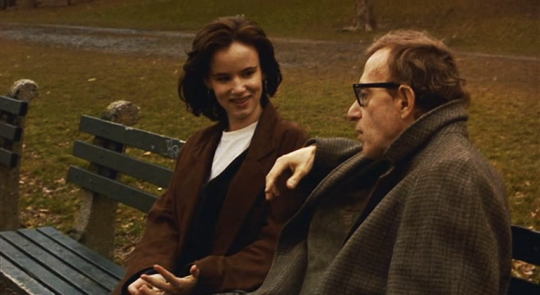
Differences in wealth and status are also generally be okay, but be conscientious that they can easily become abusive if one person misuses their power (lookin’ at you, 50 Shades.)
Last, and certainly not least, your characters will almost definitely need to be equals in terms of three-dimensionality. No exceptions.
Which brings me to my final point:
5. Give your love interest purpose (outside of being a love interest.)
I’ve talked about this before, but why do you think there’s such a huge following for Kirk and Spock’s romance (besides that one episode where Spock gets super horny and the two of them role around in the sand for twenty minutes), when there are droves of female love interests for both?
Why are Dean and Castiel AO3′s most popular pairing (besides their blaring sexual tension and the recurring prevalence of romantic tropes throughout their narrative, as well as the fact that both are based off of bisexual characters), when the following for their more canonically established relationships are practically nonexistent?
What about Holmes and Watson (besides the blaring case of queerbaiting in the BBC version, and the fact that Doyle’s Sherlock really was extremely gay), or Steve Rogers and Bucky and Barnes (besides the fact that the writers somehow find the possibility of making Steve a Nazi less offensive than having him love a man)?
Internalized misogyny and fetishization of MLM by straight women is definitely a factor. But as an extremely bi gal myself who enjoys a lot of these male/male pairings, I’m inclined to think that it’s just plain easier to get behind a relationship when both parties are equals in complexity and charisma, rather than the conventionally attractive blank sheets of paper that unfortunately characterize most female love interests in popular media.
It also works the other way: why do you think everyone hates Kara and Mon El’s romance so much? Because Kara is a wonderfully developed, benevolent character (surrounded with equally developed, benevolent characters who would work much better as love interests, I might add) and Mon El is a callous, entitled jerk who only wants to become a hero to woo his prospective girlfriend.
This is also why heterosexual pairings with equally well-developed characters have no problem at all finding followings. Just look at Han and Leia, Mulder and Scully, Booth and Bones, Monica and Chandler – both characters hold roughly an equal amount of weight in the narrative, so we give a fuck what happens to both of them.
Healthy, well-balanced WLW romances with happy endings are difficult to find in media, but some of my favorite examples of ship-worthy pairings that fit this criteria are Korra and Asami from Legend of Korra, Willow and Kennedy from Buffy (even though I’ll never forgive them for what they did to Tara), Carol and Susan from Friends, and Alana and Margot from Hannibal.
And of course, there’s these lovely ladies from Sense 8.
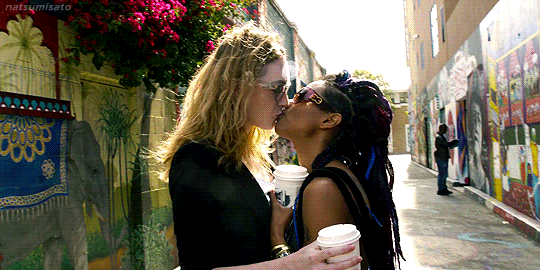
Bottom line is, make sure both your characters are important; don’t follow the trend of meaningless, forced heterosexual romances in media in which one party could almost invariably be replaced with a sexy lamp or a dildo.
Make the love interest a hero in their own right, and the audience will root for them.
Best of luck, and happy writing! <3
3K notes
·
View notes
Text
My Angel Cheat Sheet
The angel nerd in me got inspired by this cool post by @darthnubnub, and I wanted to make my own angelic cheat sheet.
Depending on the mythology, there are different types of angels than this, but these categories are acknowledged in most Abrahamic/Hebrew Lore.
Seraphim

St. Francis’ vision of a seraph (fresco attributed to Giotto)
“Above him stood the Seraphim; each had six wings; with two he covered his face, and with two he covered his feet, and with two he flew.”
- Isaiah, 6:1-3
Seraphim are:
The highest order of angels, and closest to God.Surround His throne.
Associated with fire, ferocity, and glory.
Seraphim have:
Six wings.Anthropomorphic/humanoid features.
Seraphim in media:
Castiel from Supernatural.
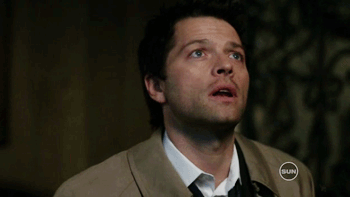
(GIF credit.)
Archangels
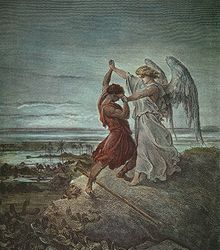
Jacob wrestling with the Angel by Gustave Doré 1885
“Then he said to me, ‘Do not be afraid, Daniel, for from the first day that you set your heart on understanding this and on humbling yourself before your God, your words were heard, and I have come in response to your words.’ But the prince of the kingdom of Persia was withstanding me for twenty-one days; then behold, Michael, one of the chief princes, came to help me, for I had been left there with the kings of Persia.”
- Daniel 10:12-13
Archangels are:
God’s messengers and fiercest warriors.
Most of the angels named in the Bible (Michael, Gabriel, Raphael.)
Archangels have:
Their descriptions are ambiguous, but my personal theory is that they are probably Seraphim.
Archangels in media:

(GIF credit.)
Gabriel from Constantine.
Michael from Michael.
Michael, Gabriel, Raphael, and Lucifer from Supernatural.
Ophanim/Thrones

A traditional depiction of the chariot vision, based on the description in Ezekiel.
“As I looked at the living creatures, I saw a wheel on the ground beside each creature with its four faces. This was the appearance and structure of the wheels: They sparkled like topaz, and all four looked alike. Each appeared to be made like a wheel intersecting a wheel. As they moved, they would go in any one of the four directions the creatures faced; the wheels did not change direction as the creatures went. Their rims were high and awesome, and all four rims were full of eyes all around.”
- Ezekiel 1:15
Thrones are:
Massive, many-eyed wheels of fire.
Drawn by Cherubim.
Dominions/Lordships
“Far above all rule and authority, power and dominion, and every name that is invoked, not only in the present age but also in the one to come.”
- Ephesians 1:21
Dominions are:
The managers of other angels.
Said to appear as divinely beautiful humans.
Virtues
“The name of the holy Virtues signifies a certain powerful and unshakable virility welling forth into all their Godlike energies; not being weak and feeble for any reception of the divine Illuminations granted to it; mounting upwards in fullness of power to an assimilation with God; never falling away from the Divine Life through its own weakness, but ascending unwaveringly to the superessential Virtue which is the Source of virtue: fashioning itself, as far as it may, in virtue; perfectly turned towards the Source of virtue, and flowing forth providentially to those below it, abundantly filling them with virtue.”
- Pseudo-Dionysius the Areopagite’s De Coelesti Hierarchia
Virtues are:
Perhaps the closest mythological equivalent to guardian angels.
Responsible for miracles on Earth.
Probably most of the angels that pop up in movies (especially Christmas movies.)
Virtues in media:
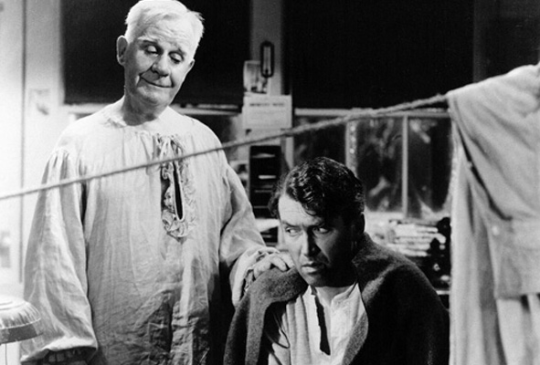
(Image credit.)
Clarence from It’s a Wonderful Life.
Al from Angels in the Outfield.
Damiel and Cassiel from Wings of Desire.
Seth from City of Angels.
Powers:
“His intent was that now, through the church, the manifold wisdom of God should be made known to the rulers and authorities in the heavenly realms.”
- Ephesians 3:10
Powers are:
Heavenly warriors who supervise divine bodies and ensure the cosmos remain in order.
Frequently depicted as warriors in suits of armor.
Principalities
“Far above all principality, and power, and might, and dominion, and every name that is named, not only in this world, but also in that which is to come.”
- Ephesians 1:21
Principalities are:
Educators and guardians of earth and humanity.
Principalities have:
Typically crowns and sceptres, indicating their position of authority.
Principalities in media:
Aziraphale from Good Omens.
Cherubim

A cherub, according to traditional Christian iconography
“Each of the four cherubim had four faces: the first was the face of an ox, the second was a human face, the third was the face of a lion, and the fourth was the face of an eagle.”
- Ezekiel 10:14
Cherubim are:
Guards of Heaven, Eden, and sacred places.
Cherubim have:
Four faces: an ox (representing livestock), a lion (representing wild animals), an eagle (representing birds), and a man (representing humanity.)
Four wings.
A flaming sword (or at least, the one protecting Eden does.)
463 notes
·
View notes
Text
The Author Speaks: All My Original Writing Content
For your convenience, a masterpost of all (or most) of my original posts so far. It will obviously be updated as I create and add more!
Enjoy, and thank you for reading! <3
The Basics: Plotting, Descriptions, and More
The Dos and Don’ts of Beginning a Novel
How to Write Good Dialogue
How to Avoid Purple Prose
Tips for Visual Thinkers
5 Ways to Name Your Novel
Romance
How to Write a Kiss Scene
How to Write a (Healthy) Romance
Mythology
Angelic Cheat Sheet
Irish Mythology Resources
Horror
My #1 Tip For Writing Horror
Characterization
How to Get to Know Your Characters
Male Protagonists to Avoid in Your Writing
Female Protagonists to Avoid in Your Writing
How to Write Strong Female Characters
The Straight Person’s Guide to Portraying Queer People
The Traits of a Likable Hero
The Secret to a Relatable Villain
How to Write (or Avoid) Abusive Parents
Reference Masterposts
Marketing Masterpost
Worldbuilding Masterpost
Drug Addiction Masterpost
Depicting Deaf, Blind, or Mute Characters
Depicting Amputees
Depicting Jewish Characters
Depicting Black Characters
Depicting Characters Who Have ADHD
Happy writing, everybody!
8K notes
·
View notes
Photo

In hopes of inspiring younger generations, NASA created this series of gorgeous retro travel posters that encourage you to imagine a future where common space travel is a legitimate possibility. Source
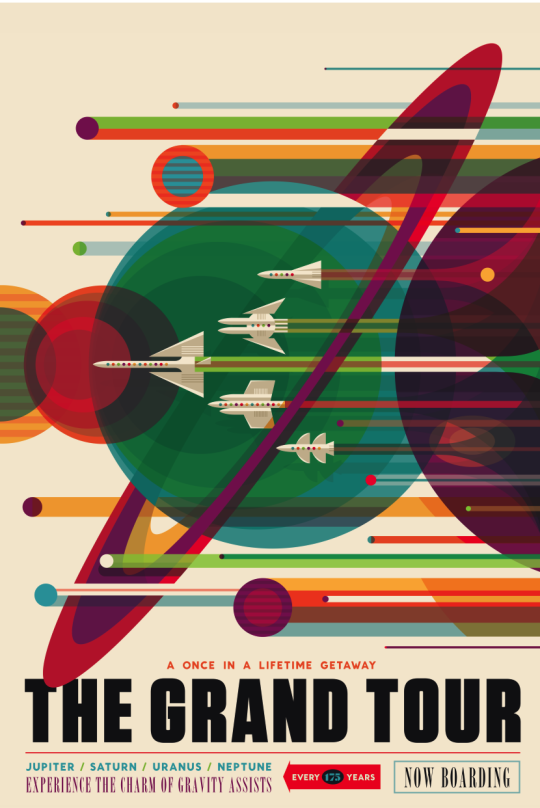
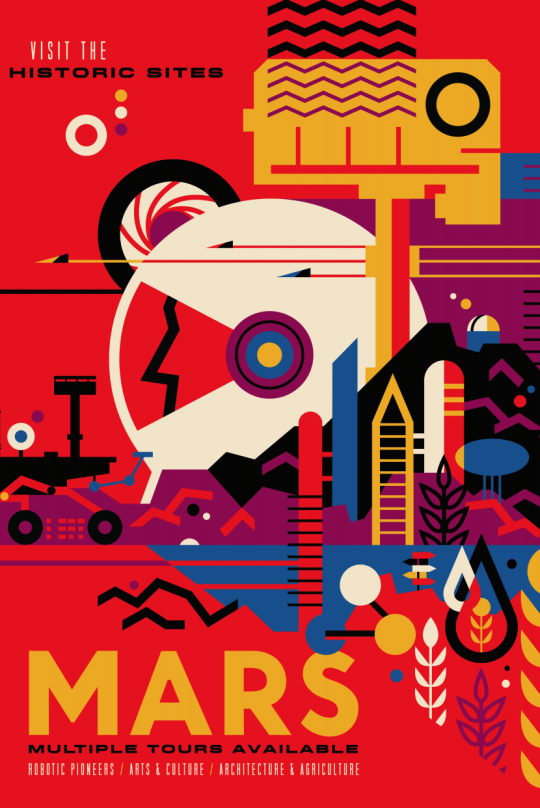


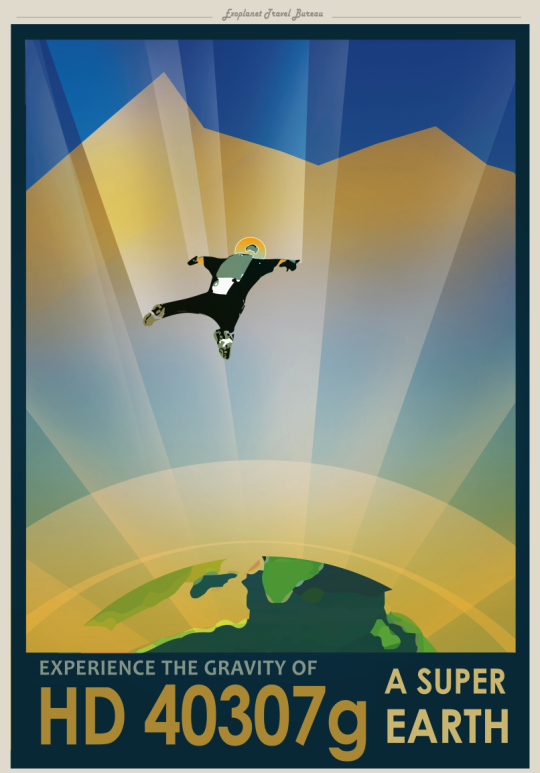
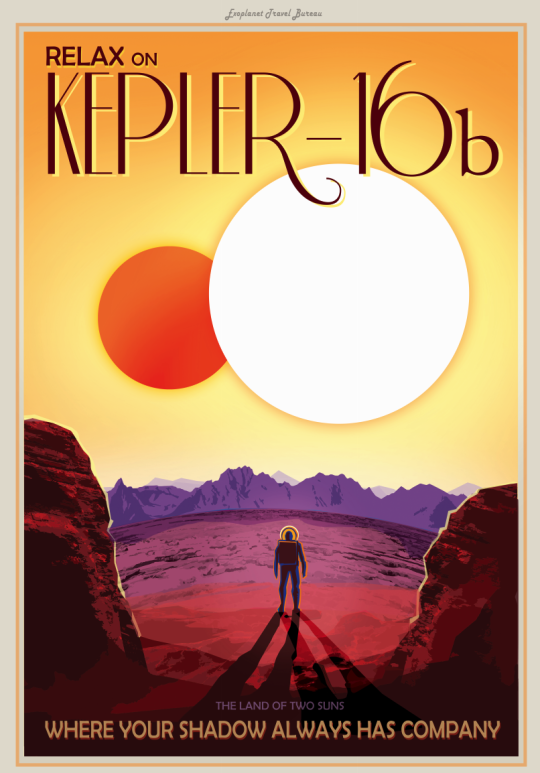
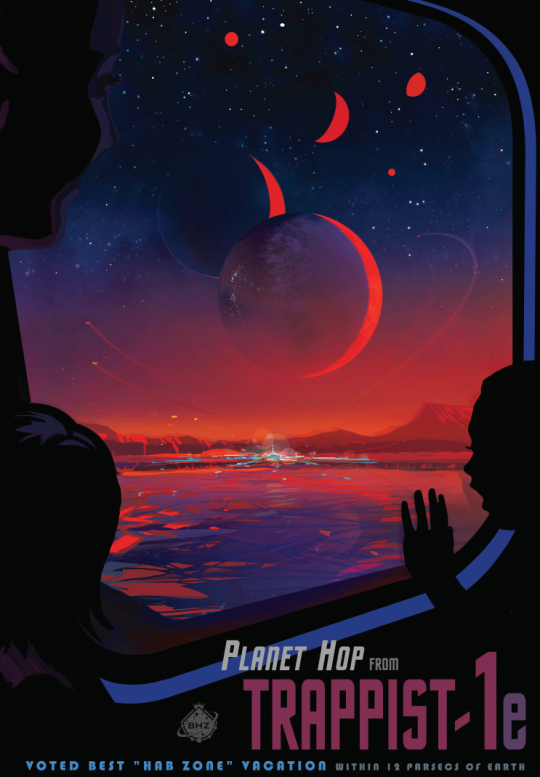

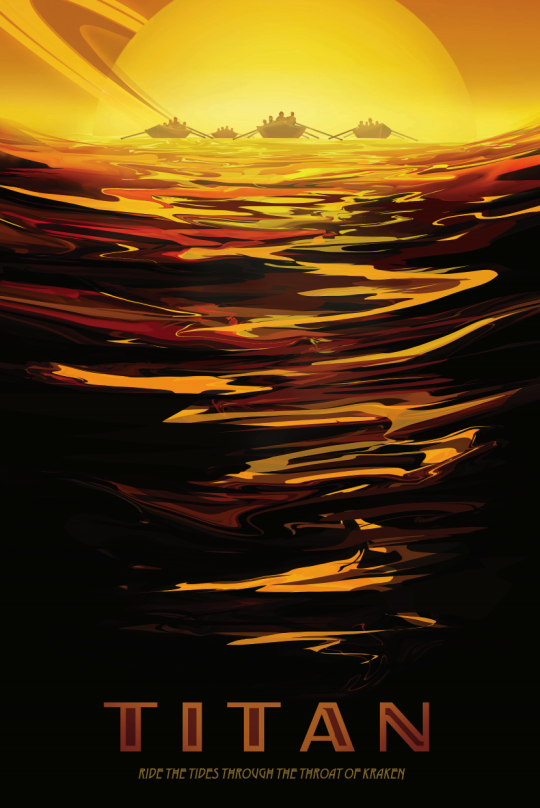

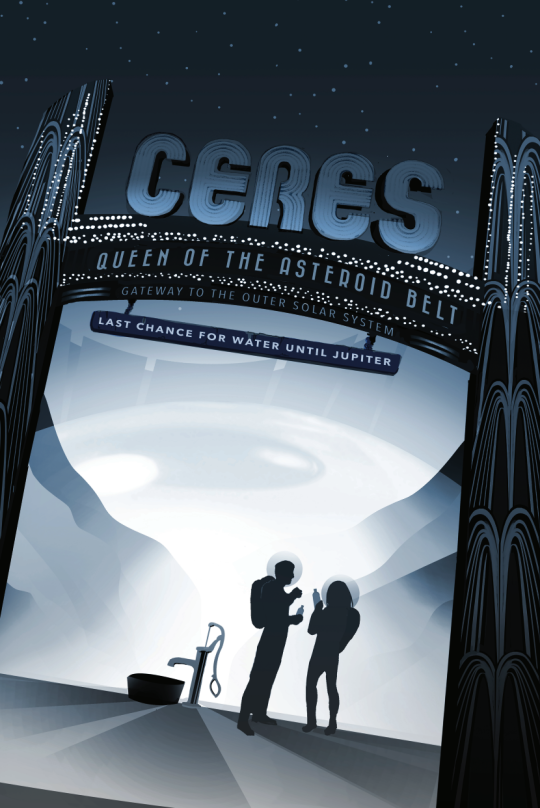


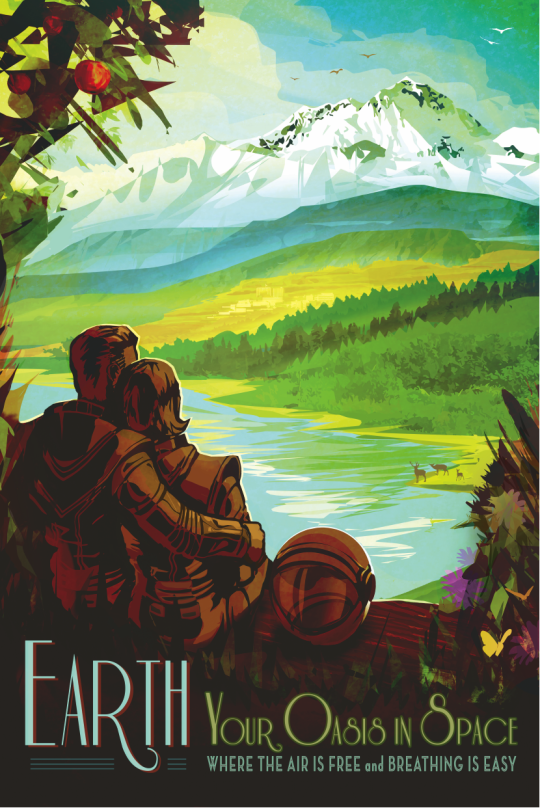
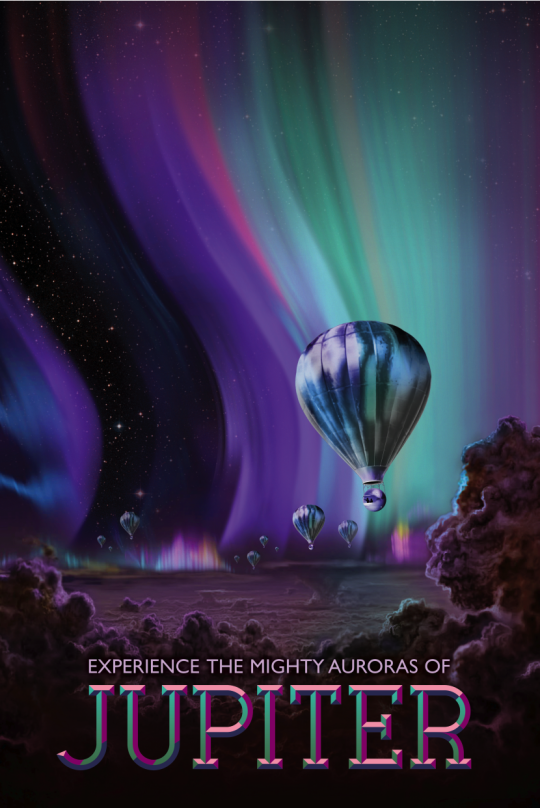

119K notes
·
View notes
Text
More Female Characters to Avoid in Your Writing
A long while back, I typed up some posts ranting about characters and tropes I disliked. These were Male and Female Characters to Avoid in Your Writing, and they’ve become my most popular posts yet. Recently, I was struck by some topical inspiration, and decided it was time for a sequel!
One again, these are my personal, subjective opinions! No one dictates your writing or portrayals but you, and no one can or should decide how you consume fiction. Also, as you may notice, I actually like most of the ladies below; I just don’t like certain aspects of their portrayal.
Enjoy, and happy writing everybody!
1. The Daenerys (i.e. the spontaneous war criminal)
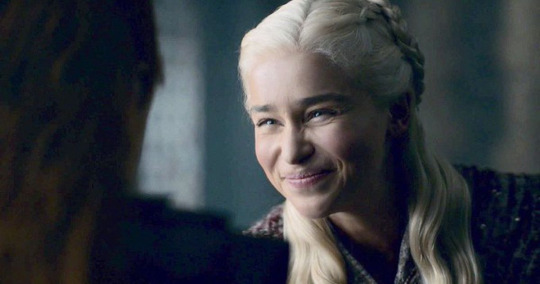
Image source
Who she is:
The formerly heroic Mother of Dragons, who randomly charbroiled a city full of innocent people.
Why it sucks:
I’m not even talking about this from a feminist standpoint, or how one of the most consistently heroic and powerful female characters took an abrupt and undignified backflip into the Dark Side. I’m speaking from a writer’s standpoint.
Regardless of whether you liked Daenerys, she was rivaled only by Jon and Brienne as the show’s most consistently heroic character From locking away her dragon children to ensure the safety of her subjects, to freeing countless enslaved citizens, she’s spent a decade proving herself to be an altruistic and noble figure. And then, in the final two episodes of the entire show, the writers dracarys-ed that shit.
For some comparison, just imagine how ridiculous it would be if Jon Snow suddenly went batshit and started hacking up citizens because he was feeling stressed. That’s about as plausible as Dany’s sudden passion for genocide.
And for the record, I’m not opposed to Daenerys becoming Mad Queen. If it was done properly. This would mean informing the actress far in advance so she could modify her portrayal accordingly (which they didn’t), and building up to it through foreshadowing and established attributes. Not at the last fucking minute.
Honestly, the only characters who remained narratively consistent to the very end are Drogon and Ghost, who are both precious babies who did nothing wrong.
How to avoid her:
Decide as early as possible where a character arc is going. Contrary to what Game of Thrones seems to believe, the character arc is important. It should have a beginning, challenges that incite development, and a satisfying conclusion that showcases how a character has changed and evolved.
And if you didn’t decide early? You still have to come up with a conclusion that makes sense for your character, and not slap on the most unexpected ending possible in the name of Subverting Expectations.
On that note? Subverting expectations isn’t always a good thing, and a reader predicting your ending isn’t the worst possible outcome. Focus on telling a good story.
2. The Rayon (i.e. the transgender Mammy)
Who she is:
A transgender woman (portrayed by the male, cisgender Jared Leto) dying slowly of AIDS in Dallas Buyer’s Club. Her role in the narrative is to teach the supposedly heterosexual (more on that later) main character that queer people are human beings.
Why it sucks:
Rayon is many things in Buyer’s Club, and most are firmly rooted in stereotypes. She’s a sassy, flirtatious, clothing-obsessed, self-loathing, drug-addicted prostitute. She’s hypersexual, but never treated as romantically desirable. She’s tragic, but also one of the few consistently comedic characters in an otherwise bleak film.
It’s her job to gently goad the main character into treating her with basic respect, but he never quite gets there. He refers to her with male pronouns throughout the entire film, and never acknowledges her as a woman. At one point, he aims a gun at her genitals and offers her a “sex change operation.” Which, is supposed to be comedic.
This isn’t to say that there are no sassy, flirtatious, clothing-obsessed, self-loathing, drug-addicted transgender sex workers, nor is there anything wrong with “stereotypical” trans people. It isn’t the job of the marginalized to dispel stereotypes. And if real trans people had created and portrayed Rayon, she could have been a realistic, dynamic, and compelling character.
And I say “created” because Rayon is strictly fictional. Outside of this film, she didn’t exist.
“Well, at least they tried to offer representation!” you protest. “What else was it supposed to be about? A straight dude in the AIDS epidemic?”
Well, no. Though the main character, Ron Woodroof, is presented to us as a violently homophobic, transphobic, womanizing asshole, the real Woodroof was, by all accounts, kind-hearted, open-minded, and bisexual.
What could have been a powerful story of a queer man defying his diagnosis, living joyfully and meaningfully, and helping to prolong the lives of countless AIDS-sufferers, was instead watered down to a story of a straight, pugnacious asshole and his stereotypical, long-suffering, transgender sidekick who dies to Teach Him Compassion.
How to avoid her:
Read books by trans people. Consume media they create or endorse.
List of youtube channels created by trans people here, and 21 books for trans awareness month here.
Put out a special call for transgender beta readers to point out mistakes, misconceptions, and offer tips on an authentic portrayal.
Garner insight into their perspective and experiences, and give them personalities outside of being trans.
3. The Piper Chapman (i.e. the unflavored oatmeal)
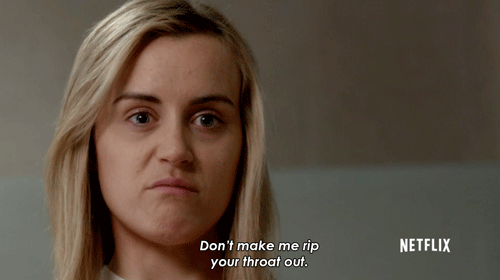
GIF source
Who she is:
The “protagonist” of Orange is the New Black, and its least compelling character. She and Larry are the sort of people who would ask me for a threesome on Tinder.
Why it sucks:
Piper’s hook is that she’s a privileged, affluent white woman who unjustly finds herself in prison for – well, for crimes she committed. But expected to get away with, because, Privilege.
This isn’t to say Piper is boring. She’s far from likable, but being likable and being boring aren’t the same thing. In another series, watching a relatively cushioned, naive, bourgeoisie woman string along various significant others, thoughtlessly incite violence, and navigate an unfamiliar prison setting would make for thought-provoking and hilarious satire.
But when compared to her charismatic supporting cast, with richly developed backstories, motivations, and relationships, she’s painfully bland. I would much rather watch a series centered around Suzanne, Nikki, Taystee, Poussey, or even Pennsatucky. They’re just more developed, opulent, enjoyable characters.
It could be argued that Piper is the viewpoint character, whom the audience is supposed to relate to. But I can assert that I don’t relate to Piper. At all. Her lack of empathy towards others – such as leaving Alex after the death of her mother, cheating on her fiance, and inadvertently starting a *ahem* white power gang – alienated me to her.
Which might not be such a bad thing, but Piper is (supposedly) the protagonist. We don’t need to like her, but we should probably be able to relate to her.
Or maybe I’m just jealous that hot women aren’t inexplicably fighting over me.
How to avoid her:
Your protagonist doesn’t have to be the most likable character in your story. They don’t even necessarily have to be the most interesting character in your story. And certainly not the most morally good, powerful, or knowledgeable. But the viewpoint character is the character who we spend the most time with, and from whose eyes we perceive the story. It’s important that we understand and relate to them emotionally.
Look at examples like BoJack Horseman, Holden Caulfield, Tony Soprano, Beatrix from Kill Bill, Mavis from Young Adult, Nadia from Russian Doll. All are complex characters, with varying degrees of moral ambiguity. Yet we can empathize with them emotionally and identify with them. Even if we’ve never been in their situation, we see where they’re coming from.
4. The Charlie (i.e. the dead lesbian)
Who she is:
One of the few recurring openly queer characters in the incredibly long-running Supernatural. A lesbian who’s journey was (sort of) brought to an end when she was killed and dumped in a bathtub to incite drama.
Why it sucks:
I love Supernatural but it can be remarkably tone deaf towards queer people, women, and marginalized groups. Which, probably merits fixing, considering its following is largely comprised of queer people, women, and marginalized groups.
I probably shouldn’t have to explain why killing off women and queer people for drama is Bad, but I’ll delve into its history a little: from what I’ve read, censorship laws of the twentieth century forbade the portrayal of queer people unless they were ultimately killed or “reformed.” This is why so much LGBTQ+ fiction is essentially gay tragedy porn, and why gays are so frequently buried to aid in the emotional narrative of their straight counterparts.
That’s not to say queer people can never be killed off. I might not have an issue with Charlie’s death (especially in a show as violent as Supernatural), if she weren’t the only openly queer character at the time.
And there’s plenty of room for representation! If Dean was openly bisexual, if angels were vocally confirmed to be nonbinary, and if there were more recurring, respectfully portrayed female and sapphic characters, Charlie’s death might not feel like such as slap in the face. But as it is, it feels like a contribution to an ugly pattern.
In fairness, Supernatural has since improved in its portrayal of queer people: two gay male hunters were introduced and given a happy ending, an alternate universe version of Charlie was introduced to the cast, and God is portrayed as a bisexual man.
Yes. All of that happened. You have to see it to understand.
How to avoid her:
Educate yourself on the history of censorship in the LGBTQ+ community, as well as hate crimes and decreased life expectancy. Make sure you aren’t contributing to the suffering of queer people.
If you have only one confirmed queer character in the midst of a very large cast, I’m inclined to think you need more. You could say I’m BI-ased on the matter, though.
Look up “fridging,” and think about how many stories use the death of female characters to incite drama for men.
5. The Allison (i.e. the reformed feminine)

GIF source
Who she is:
She’s one of the most interesting members of the Breakfast Club, and that’s saying something. A self-proclaimed compulsive liar who will “do anything sexual” with or without the promise of a million dollars (as well as one of the most quotable characters in the film) she demonstrates the emotional pain and complexity that’s often ignored or shrugged off as teen angst.
And then she gets a makeover and a hot boyfriend, and suddenly everything’s better.
Why it sucks:
It would be one thing if Allison’s problem was that she didn’t feel pretty or desirable. But she never (to my recollection) offers any indication of that, and that’s part of what makes her such a refreshing portrayal of insecurity. She’s emotionally neglected by her parents, and that is appropriately treated as devastating.
It’s a complex and beautifully-portrayed problem that deserved far more than such a superficial, slapped-on solution.
Similarly, there’s no reason why Allison is paired up with the jock at the end of the film. Neither showed any romantic interest in one another until her unnecessary makeover.
A much better ending to her arc would be her finding acceptance among her newfound friends, and finally garner the recognition and acknowledgement she never got from her parents.
I was torn between using Allison for this example, or Sandy’s makeover from Grease. In both, girls are encouraged to alter their appearances to solve plot-related problems. And both were “fixed” to conform to some standard of femininity or feminine sexuality that they didn’t meet before.
How to avoid her:
If a character feels the need to change their appearance to accommodate others or be respected, that should probably be treated as a negative thing.
Your character’s appearance can be a good tool to represent emotional changes. If they alter their appearance, there should be a meaningful reason behind it – outside of fitting into societal norms or garnering the approval of others.
A girl putting on makeup isn’t a groundbreaking plot point, and girls who don’t perform to standards of femininity aren’t broken or deficient. They don’t need “correcting.”
2K notes
·
View notes
Quote
I shall live badly if I do not write, and I shall write badly if I do not live.
Francoise Sagan, playwright and novelist (1935-2004)
18 notes
·
View notes
Photo

Audre Lorde, from “Zami: A New Spelling of my Name,” published c. 1982
#audre lorde#african-american literature#zami; a new spelling of my name#quotes#inspiration#potential fic quotes
8K notes
·
View notes
Text
Publishing for Fun and Profit
So there was a list going around tumblr for a while that made it to my dash of literary journals that accept open submissions (and will pay!), but upon inspection about half of them were closed indefinitely, and I found quite a few other places that looked interesting through further research, so I wanted to post my own list.
I tried to focus on things that paid professional grade (at least 6 cents per word), were friendly to speculative fiction, and specifically encouraged diversity and writing about marginalized groups.
(Please note that as of right now I have never submitted or been published with any of these, so if anyone has experience with them, good or bad, please feel free to message or reblog this with your experiences.)
Speculative Fiction
Strange Horizons — Speculative fiction (broadly defined) with an emphasis on diversity, unusual styles, and stories that address politics in nuanced ways. 8c per word. Up to 10,000 words, under 5,000 preferred. Responds within 40 days. LGBT+ positive.
Fantasy & Science Fiction Magazine — Sci-fi, fantasy, horror, etc. 7-12c per word. Up to 25,000 words. No response times listed.
Asimov’s Science Fiction — Primarily sci-fi but accepts fantasy and surreal fiction, but no high fantasy/sword and sorcery. Prefers writing that is character driven. 8-10c per word. 1,000-20,000 words. Responds in about five weeks.
Evil Girlfriend Media — Horror and urban fantasy centered on female empowerment and defying gender stereotypes. $100 flat payment. 4,000-7,000 words. No response times given. LGBT+ friendly.
Beneath Ceaseless Skies — Fantasy with a focus on secondary worlds and characters. 6c per word. Up to 10,000 words. Average response time 2-4 weeks.
Fantastic Stories — Speculative fiction with an emphasis on diversity and literary style. 15c per word. Up to 3,000 words. Responds within two weeks. LGBT+ positive.
Fiction Vortex — Serialized fantasy and speculative fiction. $300 for featured stories, $50 otherwise. 3,500 words or less. No response times given.
Shimmer — Speculative fiction with an emphasis on diversity, strong plots, vivid characters, and beautiful writing. 5c per word. 7,500 words or less (will consider longer words with query letter). Usually responds within two weeks. LGBT+ positive.
Clarkesworld Magazine — Sci-fi, fantasy, and other speculative fiction. 10c per word up to 5,000 words, 8c per word after. 1,000-16,000 words. Responds within days usually, gives a tracking number.
Apex Magazine — Speculative fiction of all kinds. 6c per word, +1c per word for podcast stories. Up to 7,500 words, all submissions over will be auto-rejected. Responds within 30 days.
Heliotrope Magazine — Speculative fiction of all kinds. 10c per word. Up to 5,000 words. Responds within 30 days.
Lightspeed Magazine — Speculative fiction of all kinds, with creativity and originality in terms of style and format encouraged. 8c per word. 1,500-10,000 words, under 5,000 preferred. LGBT+ positive. Submissions temporarily closed for their main magazine but is accepting for their People of Color Destroy Science Fiction special.
General Fiction
The Sun Magazine — General fiction, likes personal writing or writing of a cultural/political significance. $300-$1500 flat payment and a one year subscription to the magazine for fiction (also accepts essays and poetry). No minimum or maximum lengths but over 7,000 words discouraged. Responds in 3-6 months. Physical submissions only.
One Story — Any and all varieties of fiction, “unique and interesting” stories encouraged. $500 payment plus 25 contributor copies. 3,000-8,000 words. Usually responds in 2-3 months.
Camera Obscura — General fiction. $1000 for featured story, $50 for “Bridge the Gap” award, no payment for other contributors. 250-8,000 words. Response time vary, running just over two months as of now.
Flash Fiction
Daily Science Fiction — Speculative flash fiction (including sci-fi, fantasy, slipstream, etc.). 8c per word. Up to 1,500 words, but shorter stories given priority. Response times not listed.
Vestral Review — General flash fiction. 3-10c per word depending on length to a max of $25. Up to 500 words. Response within four months.
Flash Fiction Online — General flash fiction. $60 flat payment. 500-1,000 words. Response times not listed.
Novels/Novella
Riptide Publishing — Any LGBTQ manuscripts between 15,000 and 150,000 words. Currently especially interested in lesbian romances, trans stories, asexual/aromantic stories, romances with a happy ending, and genre fiction such as urban fantasy. Also has a YA branch. LGBT+ positive.
Crimson Romance — Romance stories of all kinds, currently seeking LGBT+ stories with a focus on emotional connections and relationships, especially m/m romance. Novel (55,000-90,000 words) or novella (20,000-50,000 words) length. LGBT+ positive.
Kindle Direct Publishing
Kindle Direct Publishing — Allows you to set your own prices, create your own cover art, and make royalties off of each sell. Any and all genres are welcome and if you’re prolific and smart about how you’re publishing you can make pretty good money.
General Guide to Kindle Publishing — Gives a good rundown of the publishing process on Kindle.
101 Guide to Kindle Erotica — Great guide with lots of resources about how to make money publishing erotica on Kindle.
Publishing Comics/Graphic Novels
Here is a list of potential comic companies and what kind of open submissions they accept.
Here is a list of literary agents who accept graphic novels.
34K notes
·
View notes
Text
“The soul, the dark-eyed soul, touches on pure gloom.”
— Paul Valéry, tr. by Hilary Corke, from The Collected Works; “Fragments of the Narcissus,”
503 notes
·
View notes
Photo

Anton Chekhov, from a journal entry featured in “Notebook of Anton Chekhov,”
19K notes
·
View notes
Photo
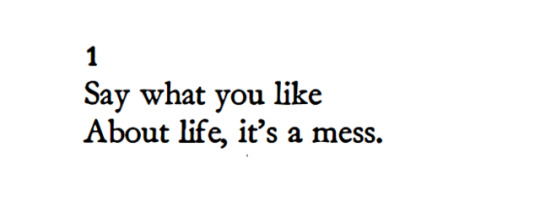
Bertolt Brecht, from Poems: 1913-1958; “Standing Orders for the Soldiers,”
4K notes
·
View notes